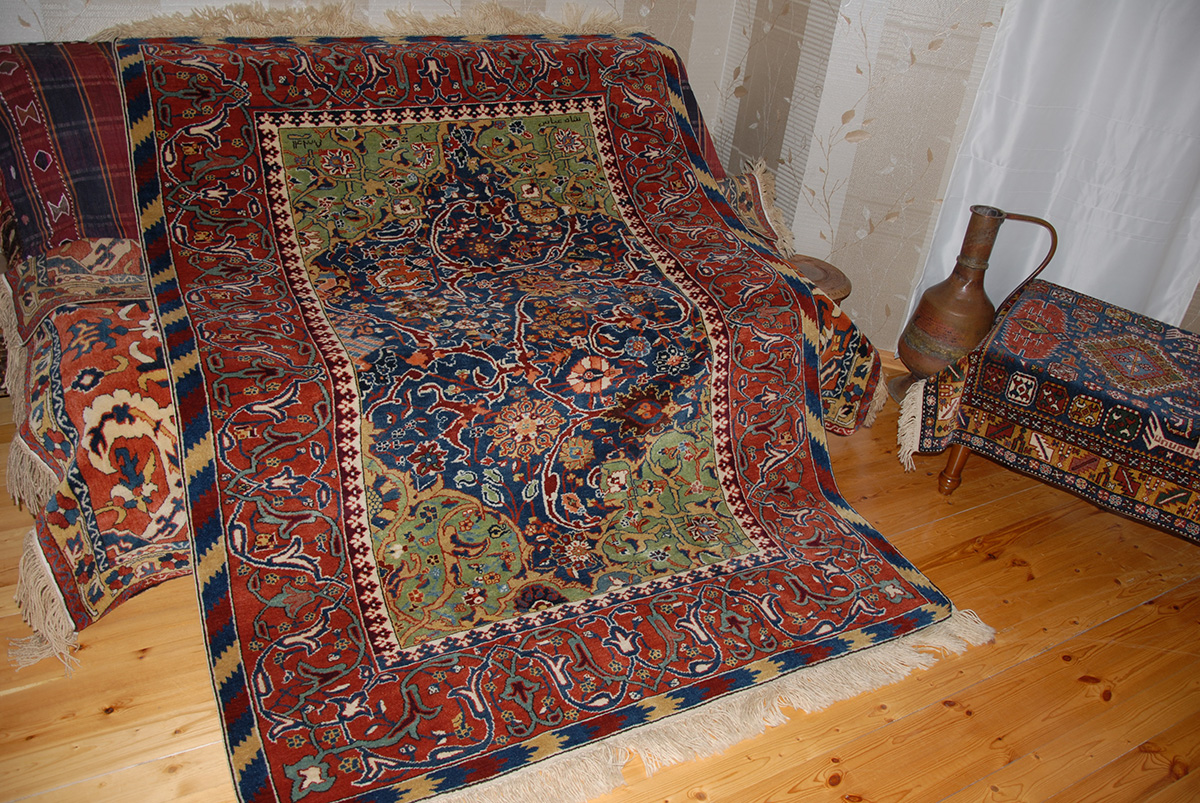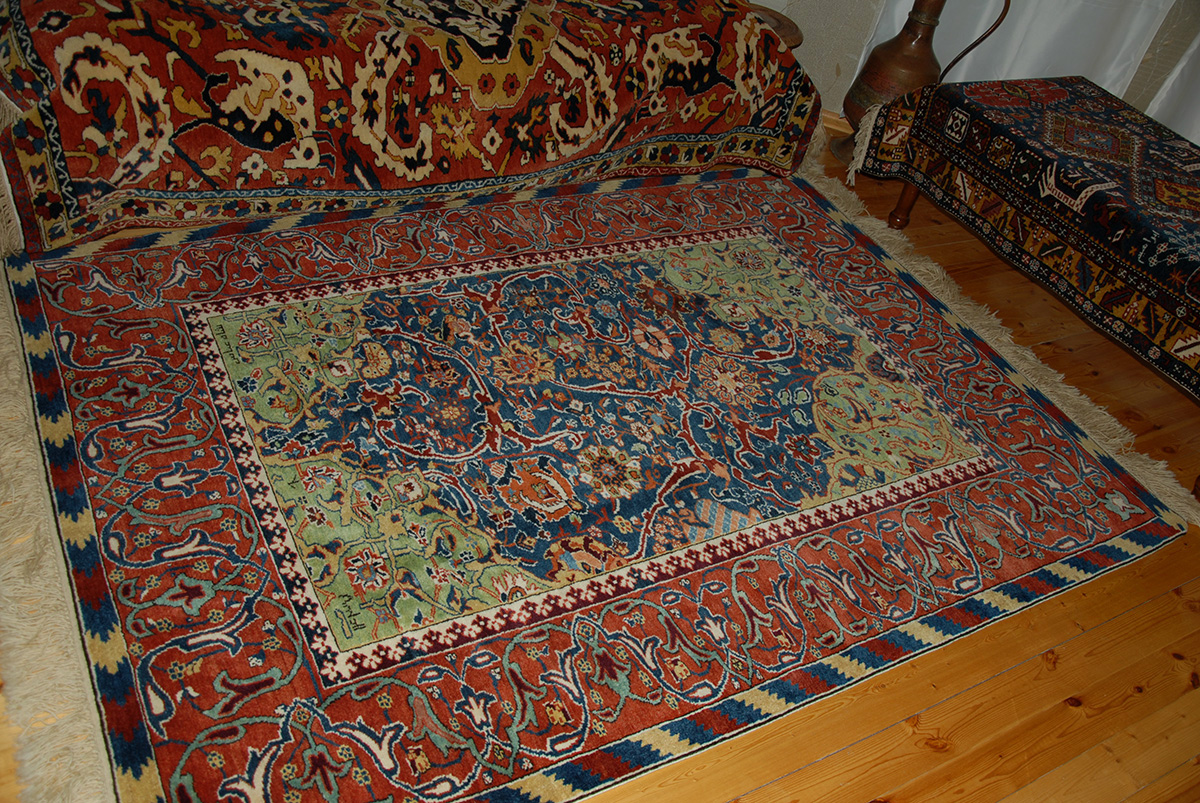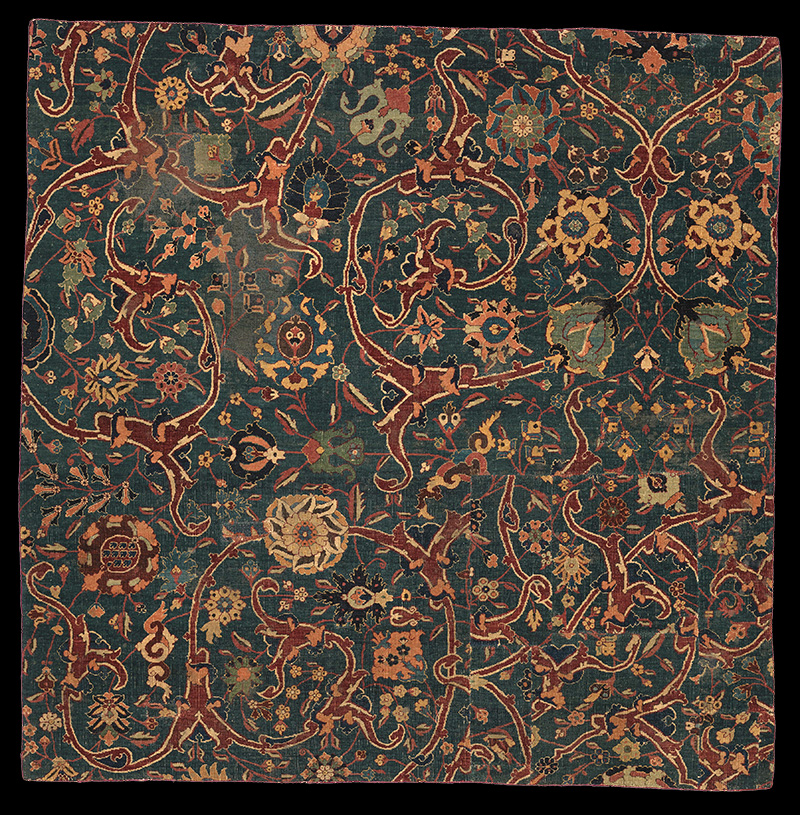
|
Reconstruction of the early XVII century Safavid 'Shah Abbas' rug in a blue-ground with scrolling floral vines (The Metropolitan Museum of Art, New York, McMullan Collection) Code: SFV08-MMSHBS Size: 155x215xm Size (ft): 5'1"x7'0" Area: 3.33 m2 Knots: Gördes, totally ~ 600 000 knots Colors (17): navy blue (2 shades), midnight blue, cerulean blue, Persian blue (medium blue), yellow, soft madder red, dark madder red, medium madder red, apricot, dark brown (undyed), ivory (undyed), old purple/mauve, obergine, dark maroon, light aqua green, Chartreuse (yellowish green). Dyes: 100% natural dyes: madder, weld (Reseda Luteola), woad, indigo, pomegranate skins, walnut husks, natural brown sheep wool, natural ivory sheep wool - all are eco-friendly and non-toxic Materials: Handcarded and handspun wool for pile, ivory wool warps and ivory wool wefts (two shots) Handwoven in Azerbaijan, by three sisters, dated (1437 (2016)), signed "Shah Abbas" Design: One of the glories of the Shah Abbas school is a group of rugs wherein the forked arabesque is the dominant feature so clearly displayed in the design of this rug. On closer examination we can find a secondary scroll system from which spring practically all of the floral elements (winding stems) with the exception of the elaborate palmette forms carried by the major arabesque system. A closely related fragment was published by Arthur Upham Pope (Chicago Exhibition, 1926, No. 21). It seems that complete rugs of this type have not survived which would indicate that they were made in very small numbers. It can be concluded that this well known design types developed at the Isfahan court during the period of Shah Abbas were made not far from Isfahan or Kirman. In fact, its structure, which is composed of two planes of warp threads, indicates that it was probably produced in the city of Kirman in southeastern Iran. Carpets from this city display a wide range of patterns but are alike in construction. Exported to India during the reign of Emperor Akbar (r. 1556–1605), Kirman carpets were known to be among the finest produced in Iran during this period.
|
|
Contact us for more information about this rug



Contact us for more information about this rug

|
For more information about the above rug or to place an order please email vd@azerbaijanrugs.com (Baku, Azerbaijan) or ra@azerbaijanrugs.com (San Francisco Bay Area). We will get back to you within 24 hours or less. |